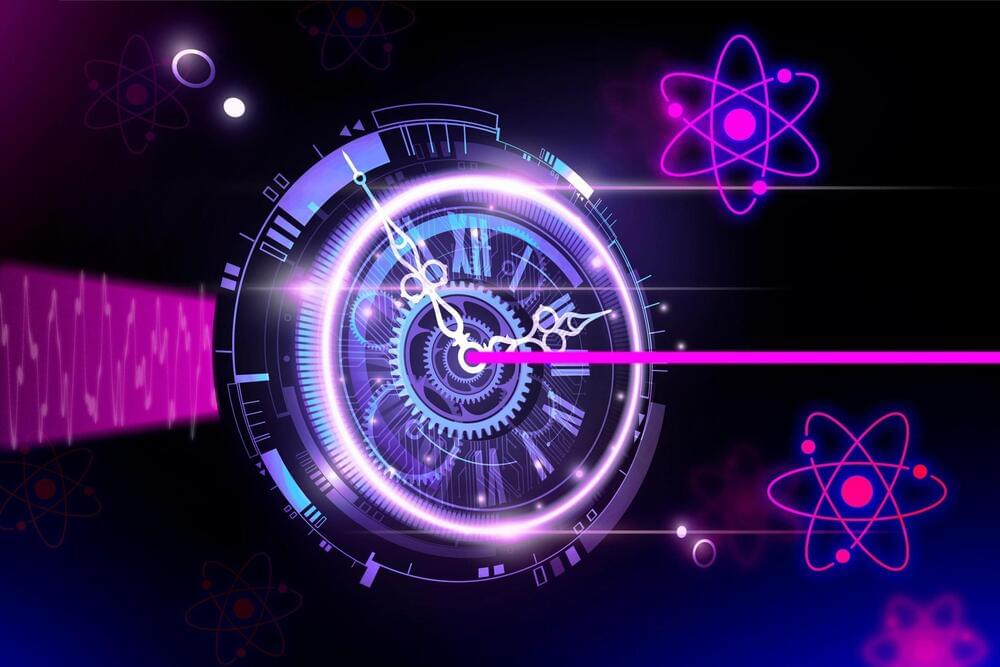More stable clocks could measure quantum phenomena, including the presence of dark matter.
The practice of keeping time relies on stable oscillations. In grandfather clocks, the length of a second is marked by a single swing of the pendulum. In digital watches, the vibrations of a quartz crystal mark much smaller fractions of time. And in atomic clocks, the world’s state-of-the-art timekeepers, the oscillations of a laser beam stimulate atoms to vibrate at 9.2 billion times per second. These smallest, most stable divisions of time set the timing for today’s satellite communications, GPS systems, and financial markets.
A clock’s stability depends on the noise in its environment. A slight wind can throw a pendulum’s swing out of sync. And heat can disrupt the oscillations of atoms in an atomic clock. Eliminating such environmental effects can improve a clock’s precision. But only by so much.
